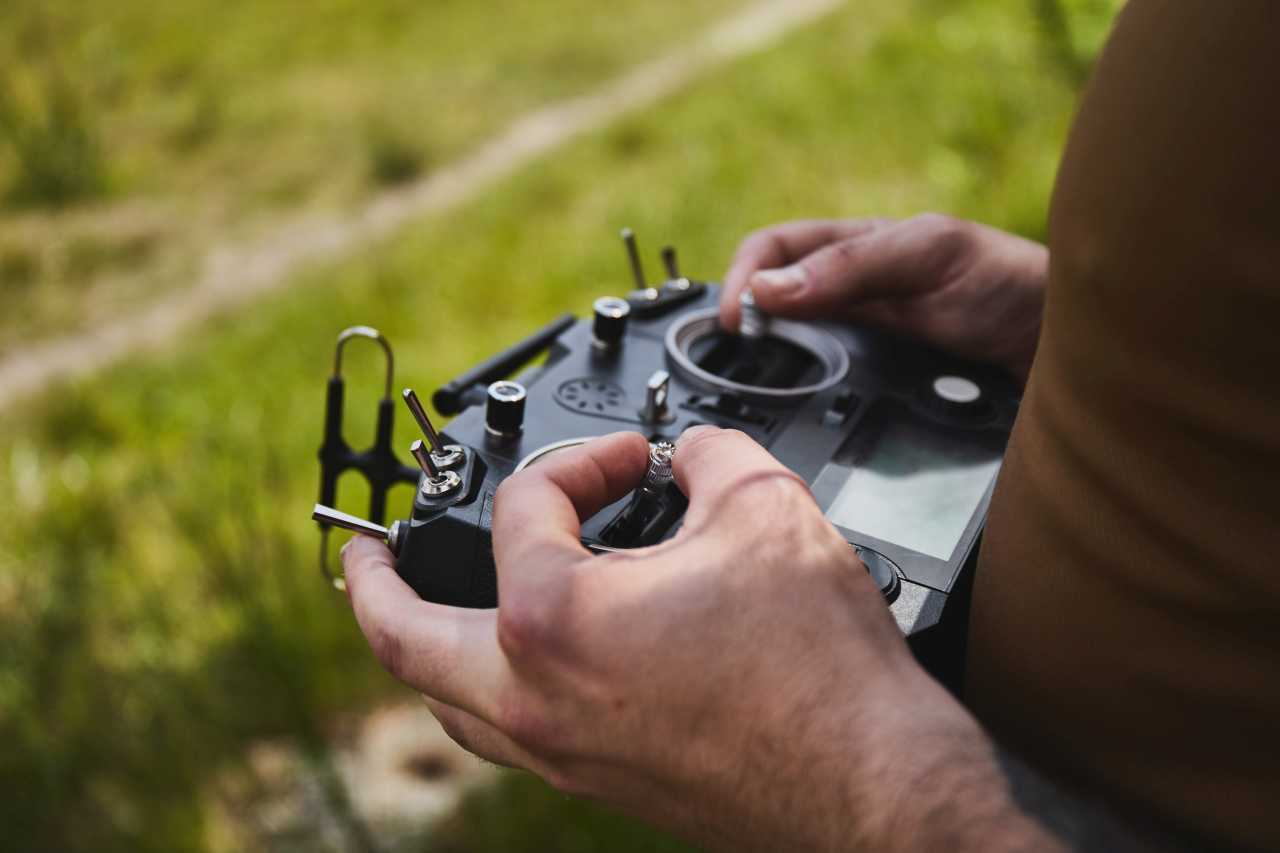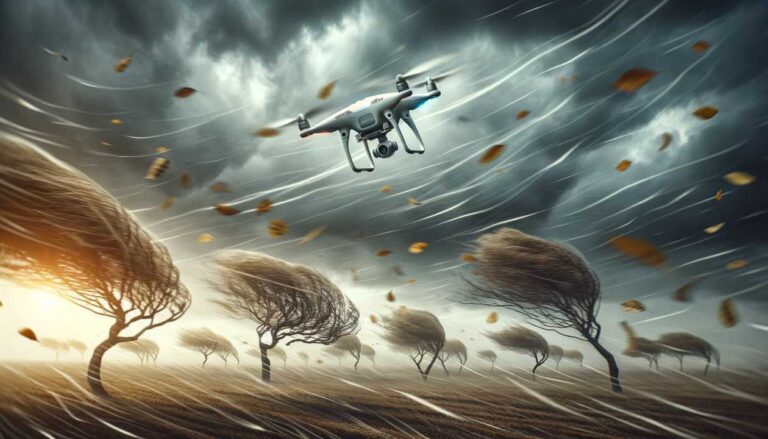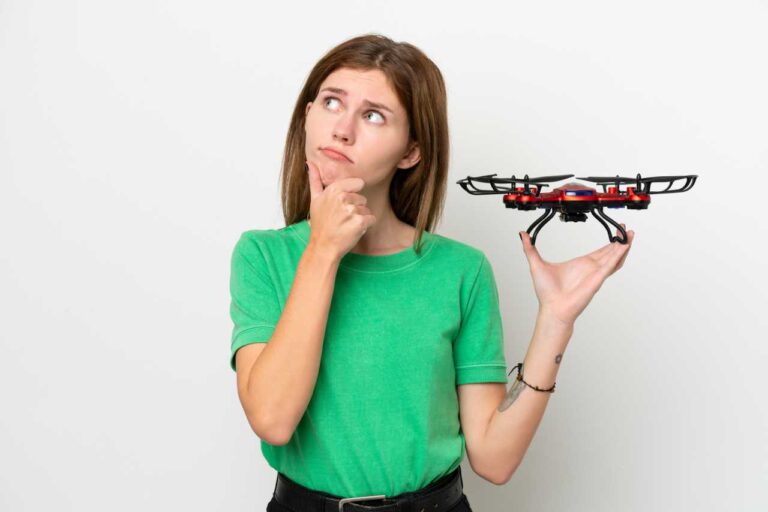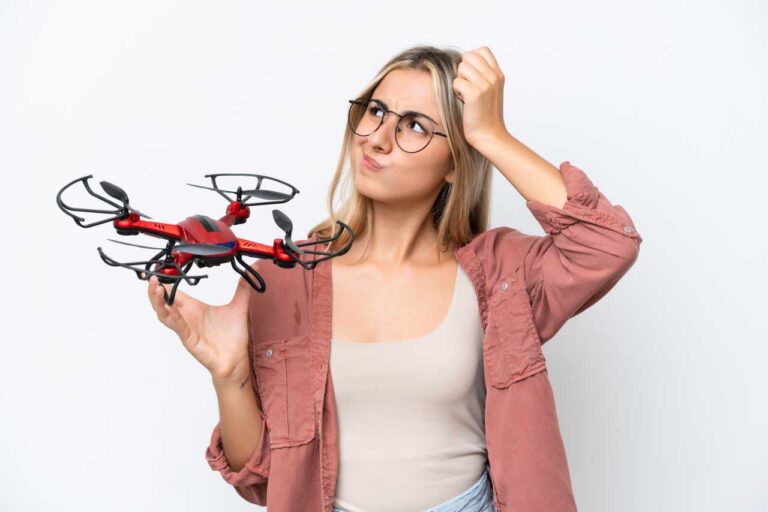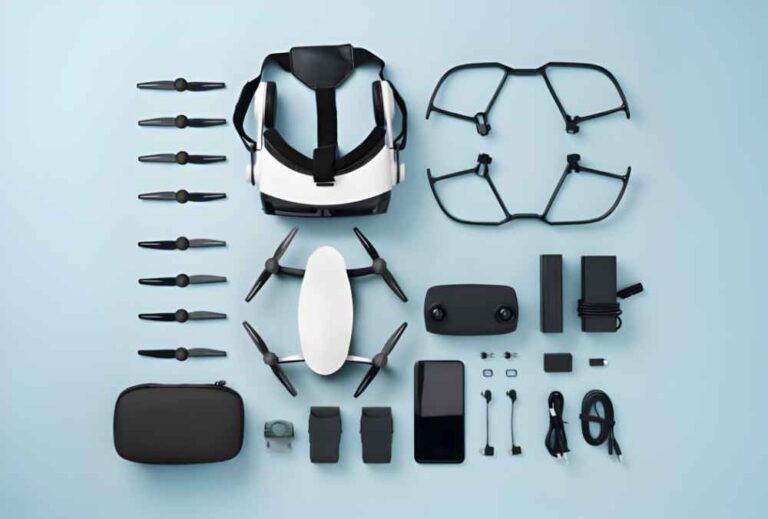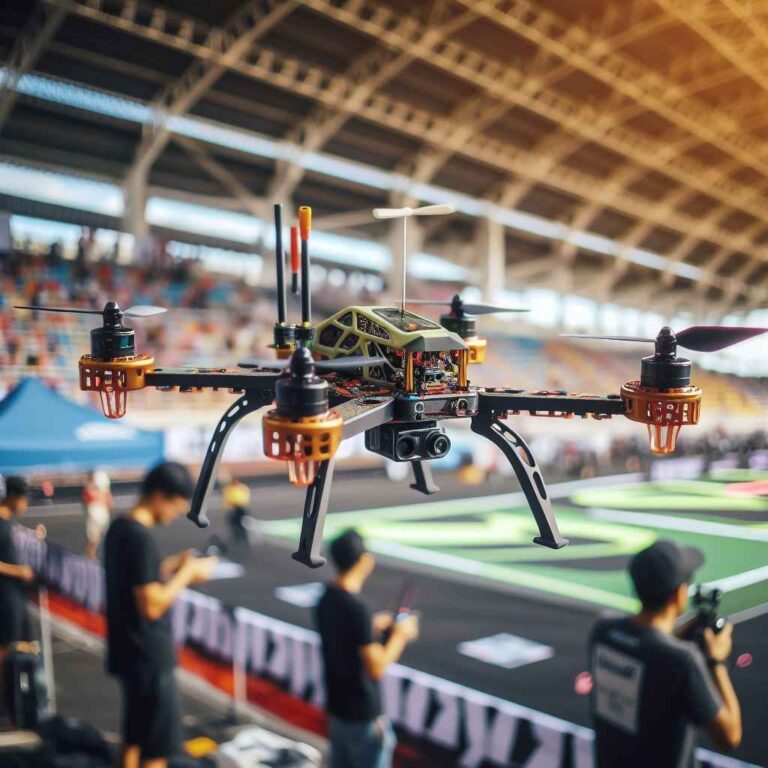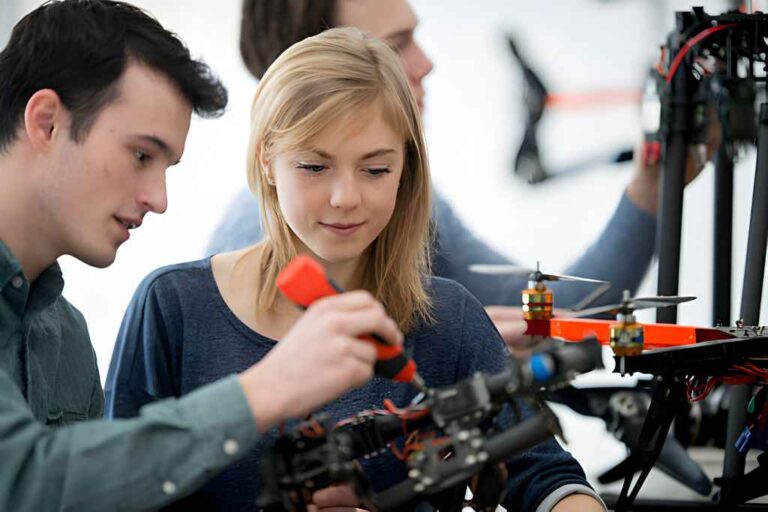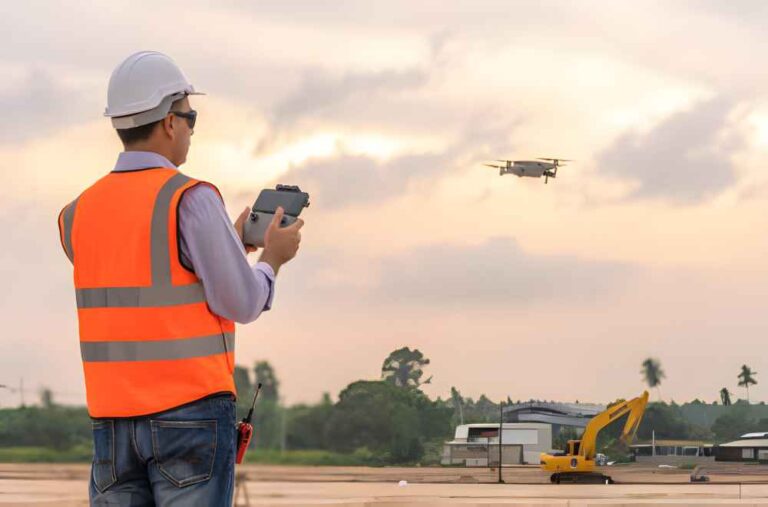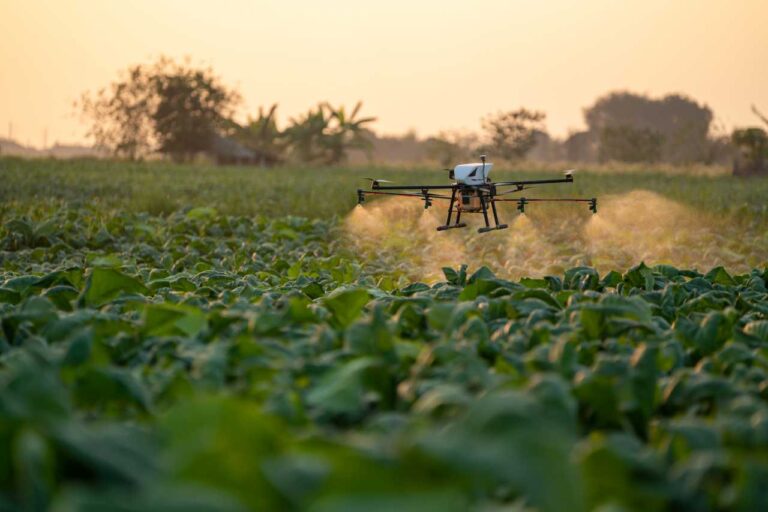Introduction to Drone Controllers
A drone controller, or remote controller (RC), is pivotal in the flight of a drone, functioning similarly to a car’s steering wheel. Understanding how drone controllers work involves comprehending the communication process via radio signals between the controller and the drone’s receiver.
A drone controller, often dubbed a remote controller or RC, is the pilot’s main tool. It’s like the steering wheel of a car, guiding the drone’s every move. Through radio signals, the controller communicates with the drone’s receiver, enabling pilots to fly their drones miles away.
The idea of controlling devices from a distance isn’t new. Think back to the 19th century when the military toyed with remote-controlled equipment. Fast forward to today, and these controllers have evolved into sophisticated devices.
They offer pinpoint accuracy, extended range, and features tailored for both beginners and pros. In this context, understanding how to calibrate a drone becomes crucial for ensuring optimal performance and control.
In a nutshell, a drone controller isn’t just another gadget. It’s the magic wand that pilots use to weave their flight stories, ensuring every drone adventure is both safe and exhilarating.
We’ve explored the various ways How Drones Are Used in Agriculture & How Drones Are Used In Real Estate in our previous articles.
The Science Behind How Drone Controllers Work
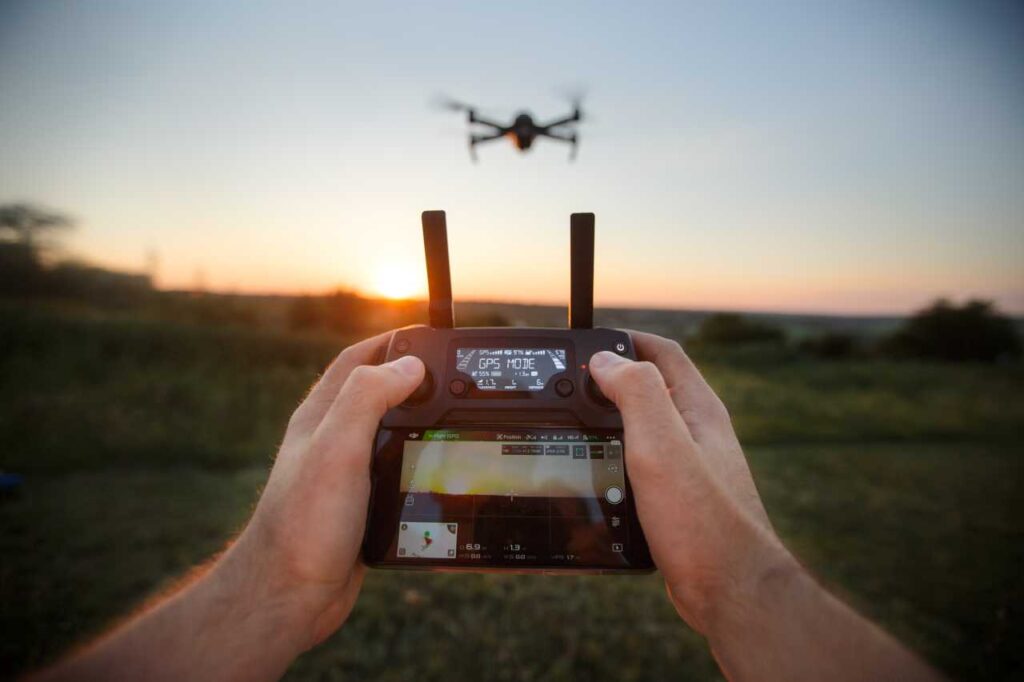
Drones have become a common sight in our skies, but have you ever wondered How Drones Work, particularly in terms of receiving commands from the ground? At the core of this communication is the drone controller.
The primary method of communication is through radio frequencies. When a pilot moves the joystick or presses a button on the radio controller, it sends a radio signal. This signal travels through the air and is picked up by the drone’s receiver.
But how does the drone understand these signals? It’s all about the link between the controller and the drone. The drone’s receiver interprets the signals from the radio frequencies emitted by the controller. This ensures that the drone responds accurately to the pilot’s commands, whether it’s to ascend, descend, or capture a photo.
Modern drones also come equipped with advanced drone communications systems. These systems not only receive commands but can also send data back to the pilot. This includes information like battery status, altitude, and even live video feeds.
The magic behind every drone flight is a symphony of radio signals, frequencies, and advanced technology, all working in harmony to ensure seamless communication between the pilot and the drone.
Key Components of a Drone Controller
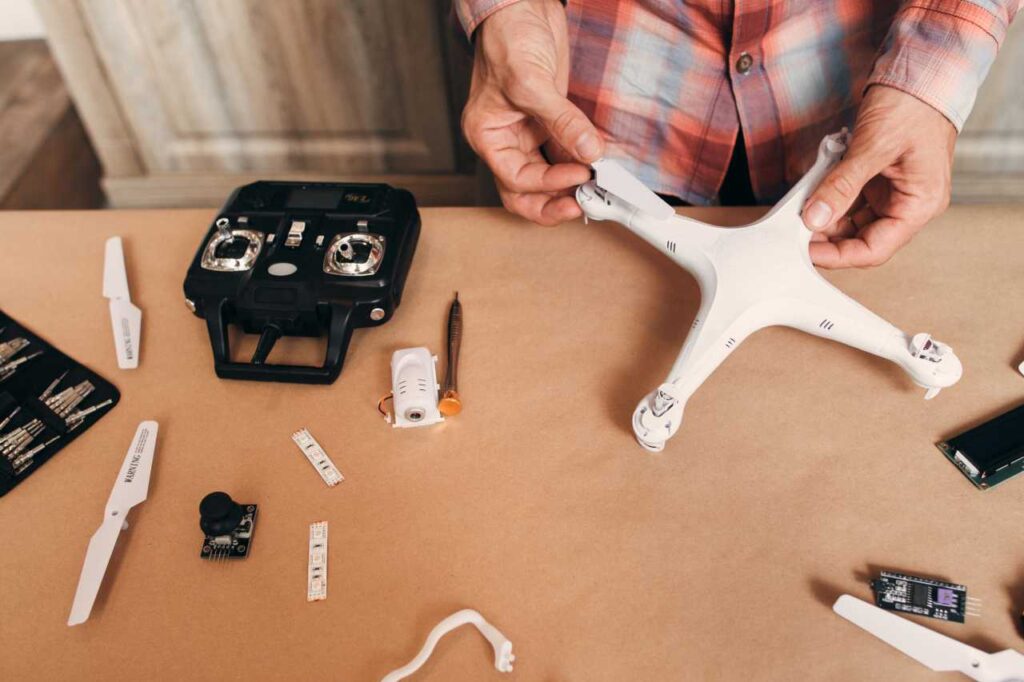
Every drone enthusiast knows that a drone is only as good as its controller. But what makes up a drone controller? Let’s dive into the anatomy of this essential device.
- Joystick: Often the most prominent feature on a controller, the joystick is pivotal for navigation. There are typically two joysticks: the right stick and the left stick. The right stick usually controls direction (forward, backward, left, right), while the left stick manages altitude and rotation.
- Button: Controllers come equipped with various buttons that perform specific drone remote control functions. These can range from taking photos, starting or stopping videos, returning the drone home, or even executing pre-programmed stunts.
- Antennas: These are crucial for transmitting and receiving signals. The antennas ensure a stable connection between the drone and the controller, especially when the drone is flying at a distance.
- Throttle: This component helps regulate the drone’s altitude. Pushing the throttle up makes the drone ascend, while pulling it down causes the drone to descend.
- Screens: Modern controllers often come with built-in screens. These screens provide real-time data from the drone, such as battery life, altitude, and speed. Some advanced controllers even offer a live video feed, turning the controller into a drone with screen on controller.
A drone controller is a blend of technology and design, crucial in determining how fast can a drone fly. Each component, from the joystick to the antennas, plays a vital role in making every flight smooth, enjoyable, and swift.
Advanced Features in Modern Drone Controllers
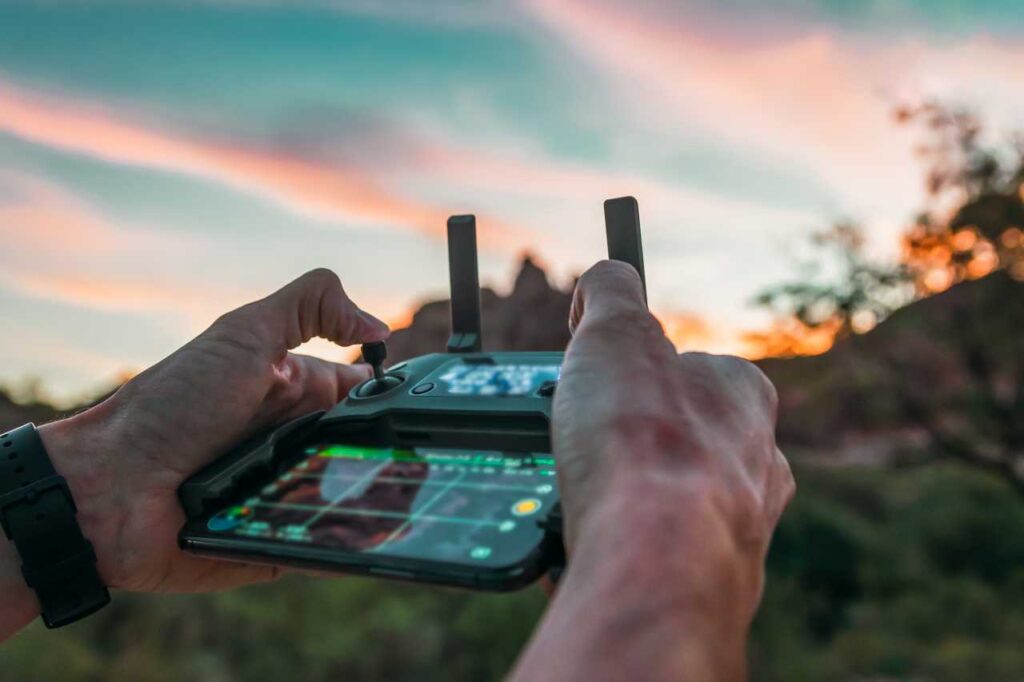
Drones and their controllers are evolving rapidly. Today’s controllers are more than just joysticks and buttons. They’re packed with cutting-edge features.
- FPV (First Person View): Want a pilot’s view from your drone? Enter FPV. This feature offers a live video feed directly from the drone. It’s a favorite among racers and photographers, making it a key feature in FPV drone controllers.
- Built-in Screens: Many modern controllers, like the DJI’s smart controller, come with built-in screens. These screens provide real-time data, including monitoring battery stats. It’s not just about numbers; it’s about a seamless piloting experience, especially when combined with FPV.
- App Integration: The rise of smartphones and tablets has influenced drone tech. Controllers now sync with dedicated drone apps. This integration offers pilots advanced features, custom settings, and even the ability to stream flights live.
- Smart Features: Today’s controllers are smarter and more intuitive. They ensure safety, precision, and a range of advanced features. From automated flight paths to real-time data, modern controllers are a tech marvel.
- DJI’s Smart Controller: It’s a standout in the drone world. Integrating FPV and app functionalities, it offers a seamless and enriched drone piloting experience.
- High-Performance Motor Control: Drones today boast top-tier motor control systems. Features like PWM-frequency dithering and adaptive motor timing ensure peak performance. These advanced systems ensure drones respond swiftly and accurately to controller inputs.
Modern drone controllers are at the forefront of tech innovation. They’re designed to offer pilots an enhanced and unforgettable flying experience.
Navigating the skies with a drone is a blend of thrill and precision. Modern drone controllers are at the heart of this experience, ensuring every flight is safe and accurate. Let’s delve into the features that make this possible.
- Altitude Maintenance: Drones are equipped with sensors that help maintain a consistent altitude. This stability is crucial, especially for beginners or when capturing steady footage. The inertial measurement unit (IMU) and barometer play pivotal roles in ensuring the drone remains at a set height.
- GPS Integration: The GPS system in drones is more than just a navigation tool. It ensures the drone knows its position in real-time, preventing it from drifting off course. This GPS integration is vital for tasks like waypoint navigation or return-to-home functions.
- Sensors Galore: From detecting obstacles to adjusting the drone’s movements, sensors are the unsung heroes of drone tech. They work tirelessly, ensuring every flight is smooth and safe. Whether it’s adjusting for wind or avoiding a tree, these sensors, combined with the drone’s altitude mechanisms, ensure precise control.
- DJI’s Vision Assist: A standout feature for the Mavic 3 series, Vision Assist anticipates obstacles from all directions. It offers multi-directional obstacle awareness, making flights safer, especially in challenging environments.
In the vast expanse of the sky, drones are more than just flying machines. They’re a testament to human ingenuity, ensuring that every ascent is as safe as it is mesmerizing. As we soar into the future, drone controllers will continue to be at the forefront, prioritizing safety without compromising on the thrill of flight.
Wrapping Up the World of Drone Controllers
Drones have changed the way we see the world. At the center of this change is the controller. It’s a piece of tech magic. The transmitter inside talks to the drone. This chat ensures every flight is spot on.
We’ve dived deep into drone transmitters and controllers. Whether you’re a hobbyist or a pro, the drone controller is key. It’s like the brain guiding the drone’s movements.
DJI, smartphone apps, and tablets have all added to this tech evolution. But one thing stays true. The bond between the pilot and the drone. It’s all thanks to the drone remote.
With every throttle push or joystick move, we step into the future. A future where drone controllers lead the way.

